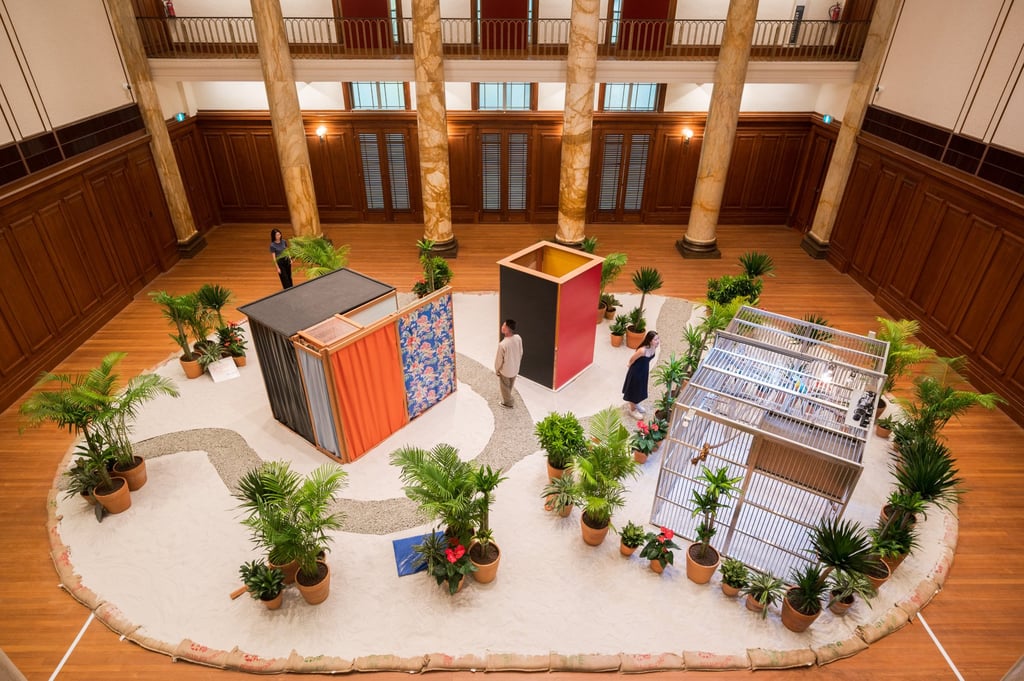‘Too ambitious’ National Gallery Singapore exhibition on colonial and postcolonial experiences in Southeast Asia and Latin America still has its merits
- ‘Tropical’ features more than 200 works from mostly Southeast Asian and Latin American artists spanning the late 19th century to the present day
- Despite its great pieces, the show is overstuffed, leaving one feeling both too full yet still hungry for a deeper exploration of the Latin American art

Inside the National Gallery Singapore, two blue macaws flutter around in a large cage surrounded by potted plants on a fake island of white sand. A gravel trail leads past poems inscribed on bricks to two shack-like structures.
This is a recreation of famed Brazilian artist Hélio Oiticica’s 1967 installation Tropicália, a work that subtly critiques stereotypes of Brazil as an idyllic beach paradise.
The piece sets the tone for “Tropical: Stories from Southeast Asia and Latin America”, which claims to be the world’s first large-scale art exhibition exploring the colonial and postcolonial experiences of two vast regions.
“When you say tropical, you start imagining banana trees, ‘natives’ in the sun living the good life and the exotic, but no – it is much more than that,” says Shabbir Hussain Mustafa, senior curator at the National Gallery Singapore and Singapore Art Museum.
“It can become a site for self-determination. This is the grand plot of this exhibition.”

According to Mustafa, the idea of the “tropical” has been an empowering, even defiant attitude adopted by both Latin American and Southeast Asian artists throughout the 20th century. They saw the tropical as a consciousness, a space to dream and build another world, he says.